Across the globe, subways and buses reign supreme as the twin pillars of public transportation. Buses boast extensive routes, making them accessible throughout urban areas, while subways cater primarily to major metropolises. Subways not only offer affordability but also ensure swift and seamless travel with intervals of a mere 2-3 minutes between stations. During the hustle and bustle of rush hour, subways undoubtedly outpace buses, whisking passengers to their destinations in record time. As an editor, I too have a penchant for the punctuality of subways over buses. Today, let's embark on a thrilling journey to uncover the fascinating world of South Korean subways!
Other helpful blogs regarding public transportation in Korea!
Korean Subway System [The Beginner's Guide]
Korean Transportation Information
Subways in Different Districts
Step into the vibrant world of South Korea, where bustling cities are connected by an intricate web of subway systems. The capital, Seoul, and the surrounding metropolitan area led the charge, with their extensive underground networks providing an efficient and popular means of transportation for countless commuters.
The Seoul metropolitan subway system is so comprehensive that it enables seamless travel across the vast majority of the region, solely using the underground network. But the excitement doesn't stop there! Discover the charm of other thriving cities like Busan, Daegu, Gwangju, and Daejeon, each boasting its own unique subway system. Although smaller in scale and less demanded than Seoul's, these subways are on a steady growth trajectory, catering to the needs of urban travelers seeking convenience. Currently offering one to three lines each, these subway systems may not be as expansive as Seoul's, but fear not, as they are continually expanding. This means that in the near future, you can expect even better connectivity in these lively cities!
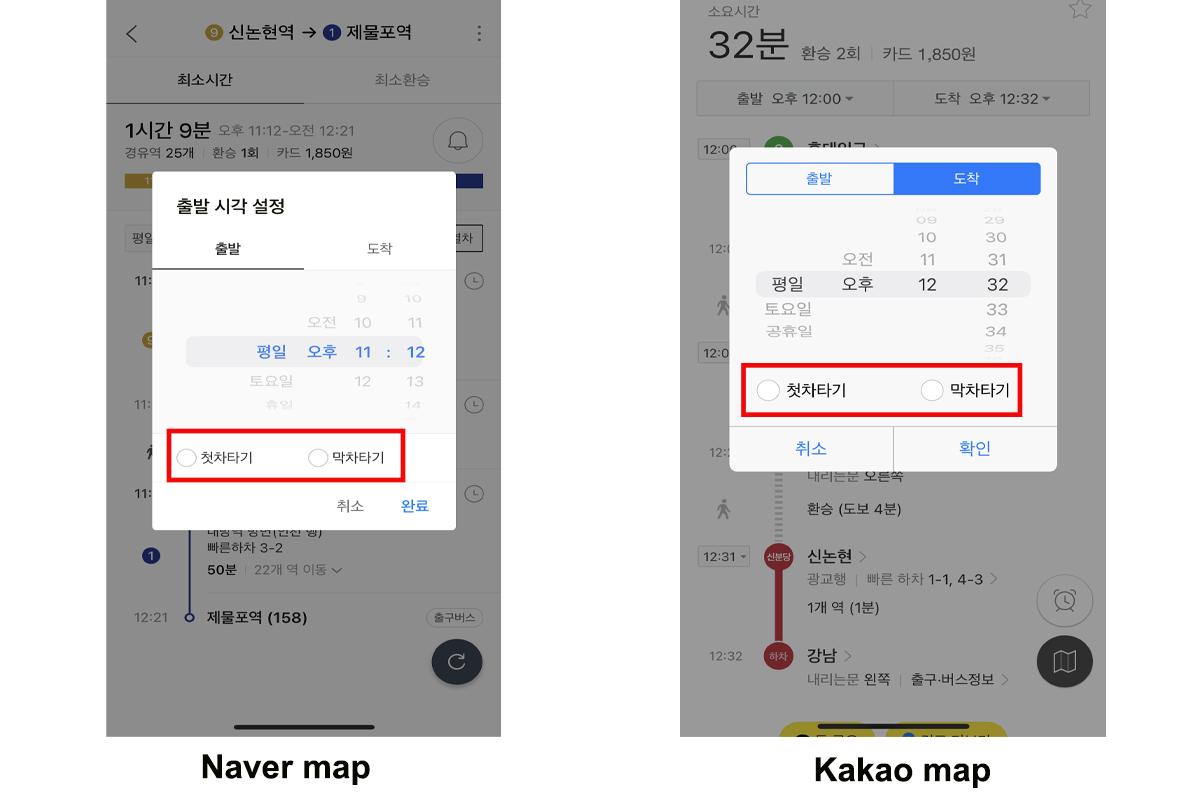
You can easily discover your subway route by checking out popular apps like Naver Maps or KakaoMap. Don't forget to set your location first to make your search more efficient! Once you've found the perfect route, click on the departure time to reveal the first and last train schedules at your boarding station. Now, are you ready to explore the unique features of subways in different regions?
Seoul
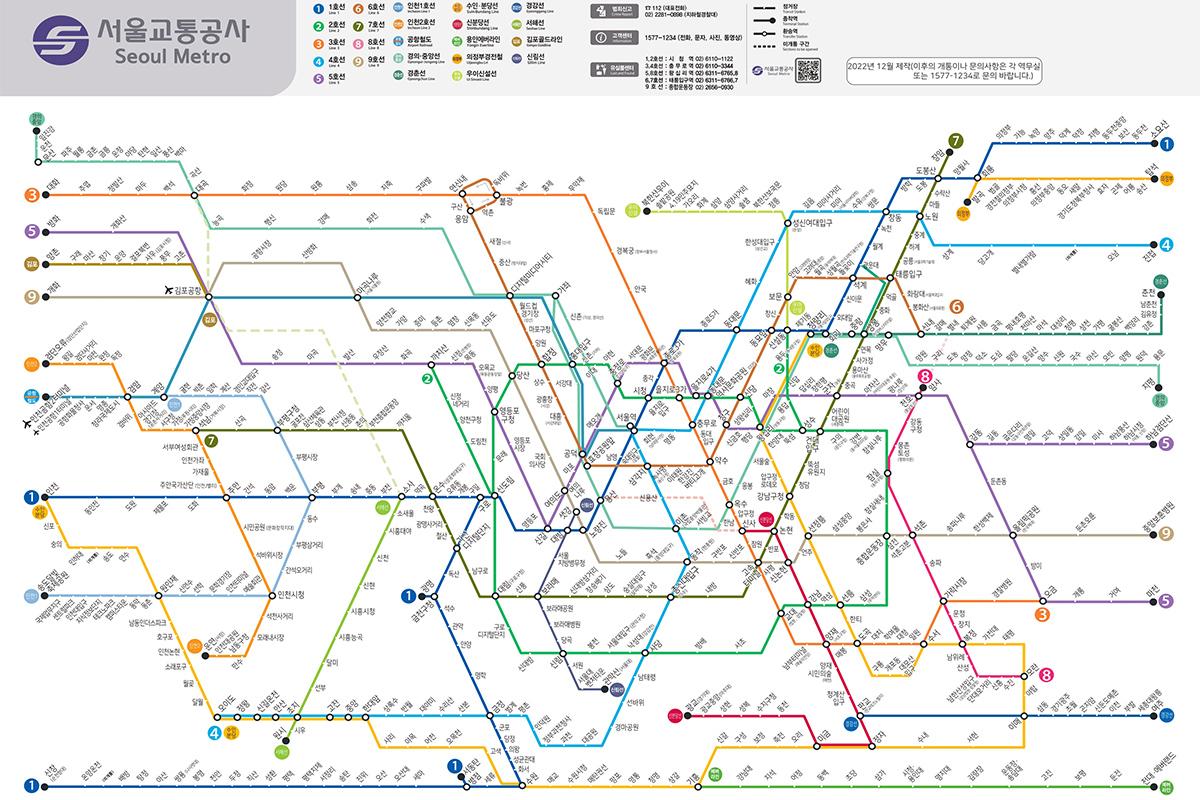
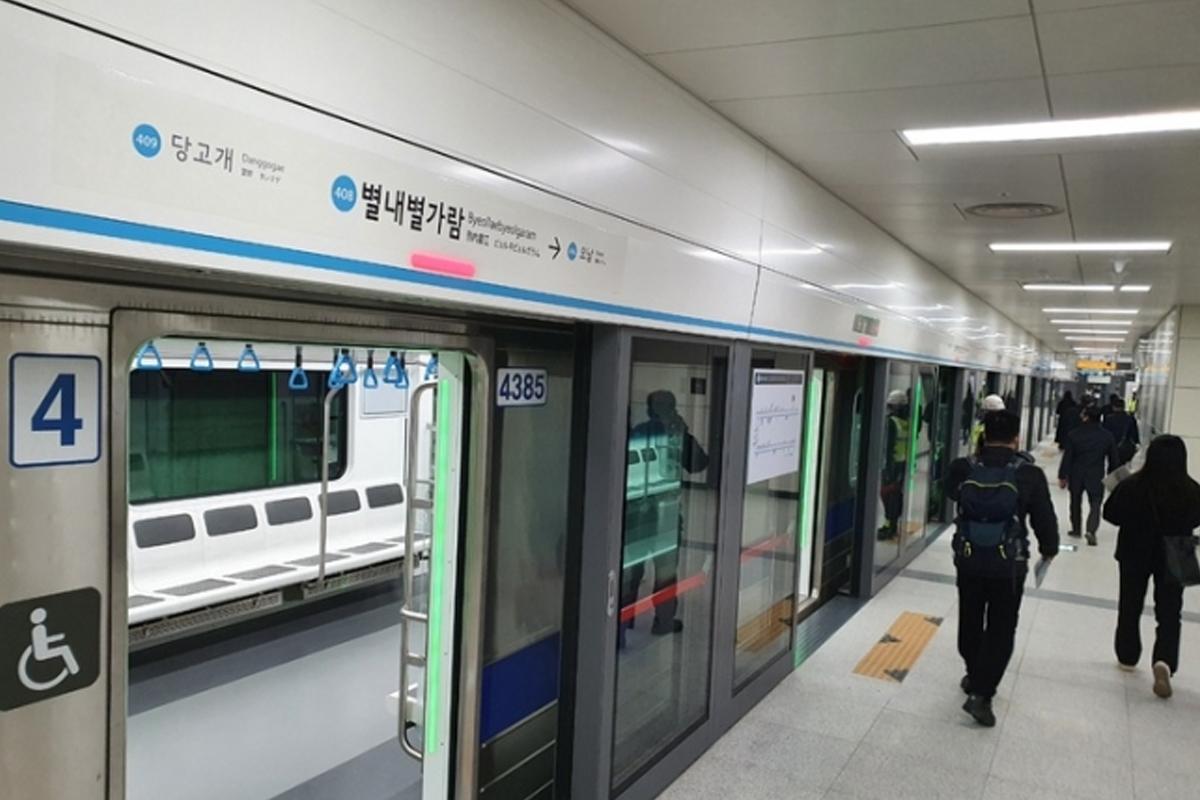
Navigating the vibrant Seoul subway system is a breeze, thanks to each line being color-coded and stations marked with easy-to-identify 3-digit codes. You'll find station names written not just in Korean, but also in English, Chinese, and Japanese, making it a cinch to locate your desired stop. Modern adventurers can conveniently switch languages on map apps to view subway maps in their preferred tongue. But if you're a fan of traditional paper maps or browsing on your computer, simply click the link to explore subway maps in English, Chinese, and Japanese. Now, let's dive into the most crucial aspect - the fares!
Operation Time Table | |||
|---|---|---|---|
| Type | Fare (KRW) | ||
| Base fare(10km) | General | Transportation card | 1,400 |
| 1-time pass | 1,500 | ||
| Teens | Transportation card | 800 | |
| 1-time pass | 1,500 | ||
| Children | Transportation card | 500 | |
| 1-time pass | 500 | ||
| Additional Charge | General | 100 | |
| Teens | 80 | ||
| Children | 50 | ||
Additional fare: 100 won for every 5km between 10km to 50km, 100 won for every 8km beyond 50km.
Korean public transportation incurs additional fares based on distance traveled. Also, when transferring between subway and bus, or between buses within 30 minutes, there are fare benefits. In addition, all subways have fares divided by age group, regardless of the region. Regular fares apply to individuals aged 19 and over, while teenagers are between 13 and 18 years old, and children are categorized as ages 6 to 12.
Busan
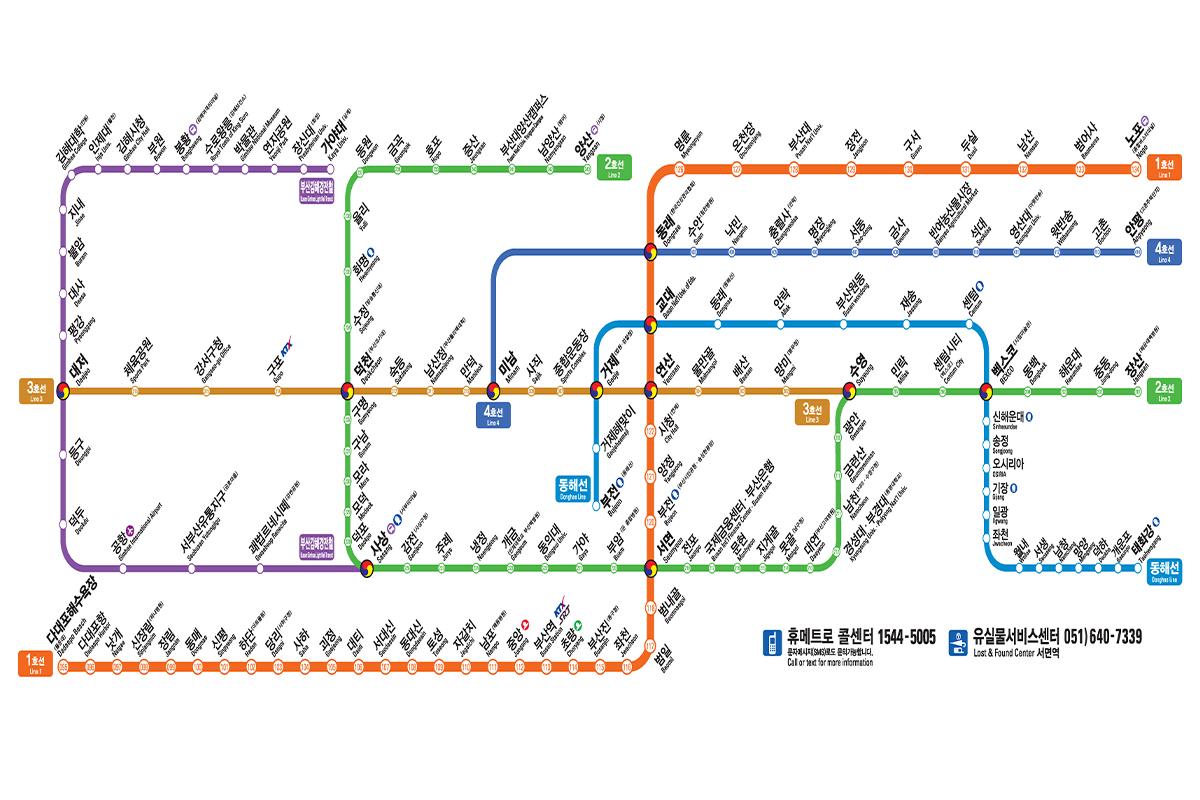
Perhaps the city that travelers visit most after Seoul is Busan, and it certainly has a well-developed subway system. An interesting point is that when the train arrival announcement is made at the subway stations near the beach in Busan, you can hear the sound of waves and seagulls in the background. As an editor, it felt somewhat more familiar and friendly.
Operation Time Table | ||||||
|---|---|---|---|---|---|---|
Transportation card | 1-time pass | |||||
Adults | Teens | Children | Adults | Teens | Children | |
Area 1 | 1,300 | \1,050 | \650 | \1,400 | \1,,150 | \700 |
Area 2 | \1,500 | \1,200 | \750 | \1,600 | \1,300 | \800 |
Busan divides the additional fare into sections. Section 1 is up to 10km from the departure station, and Section 2 is calculated based on the fare for Section 2 if it exceeds 10km from the departure station. In addition, if a passenger using a transportation card re-enters the same station with the same card within 5 minutes after the initial ticketing due to a mistake in the direction of travel or other reasons, the basic fare will be exempted only once.
Daegu
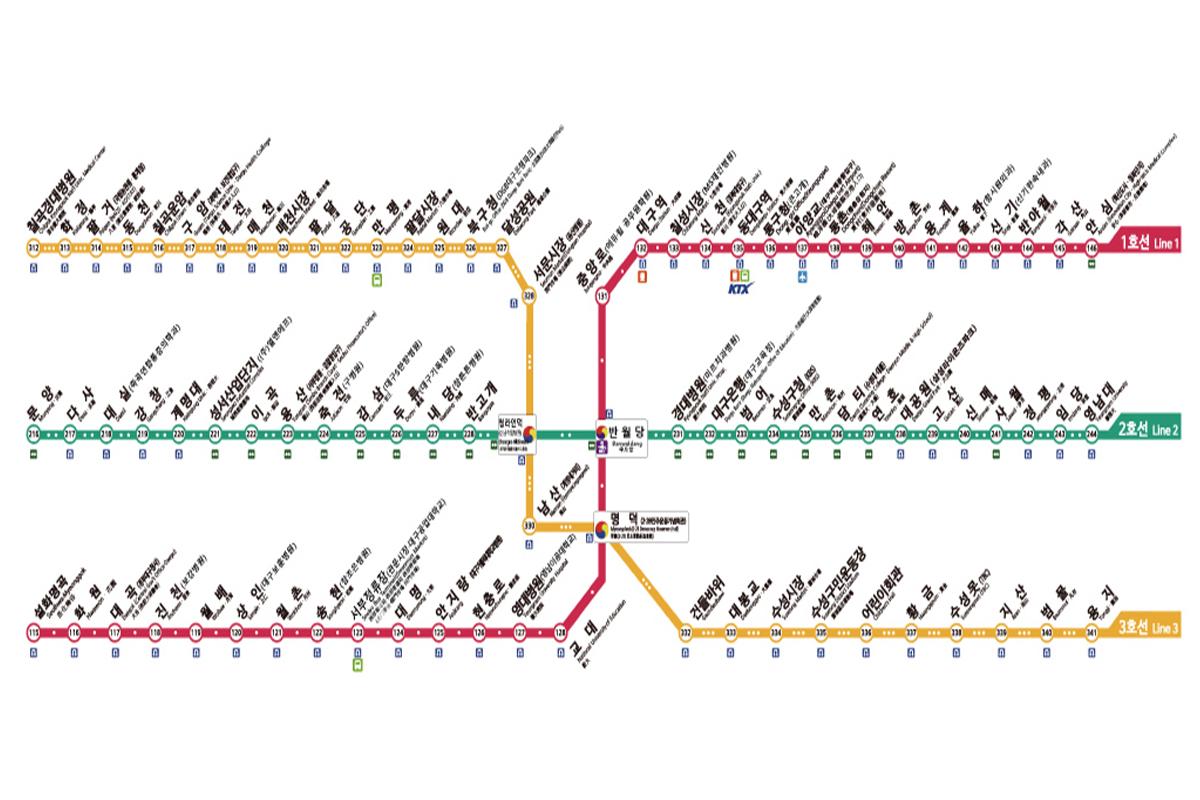
The Daegu Subway operates with three lines, and until 2014, Banwoldang Station was the only transfer station. Also, the Daegu Subway's last train ends earlier than those in other regions, so if you need to travel late at night, I recommend checking the last train schedule!
| Operation Time table | |||||
| General | Teens | Children | |||
| 1-time pass | Transportation card | 1-time pass | Transportation card | 1-time pass | Transportation card |
| 1,400 | 1,250 | 1,400 | 850 | 500 | 400 |
The biggest feature of Daegu subway is that it operates a uniform fare system, so there is no additional charge even if you travel from one end to the other. Besides that, Banwoldang Station, Jungang-ro Station, Dongdaegu Station, Seomun Market Station, and Cheongna Hill Station are particularly crowded stations, so please avoid rush hours when taking the subway!
How to Use
How to Issue and Use the 1-time Pass
Step 1 | Issue a 1-time pass on the ticket machine. 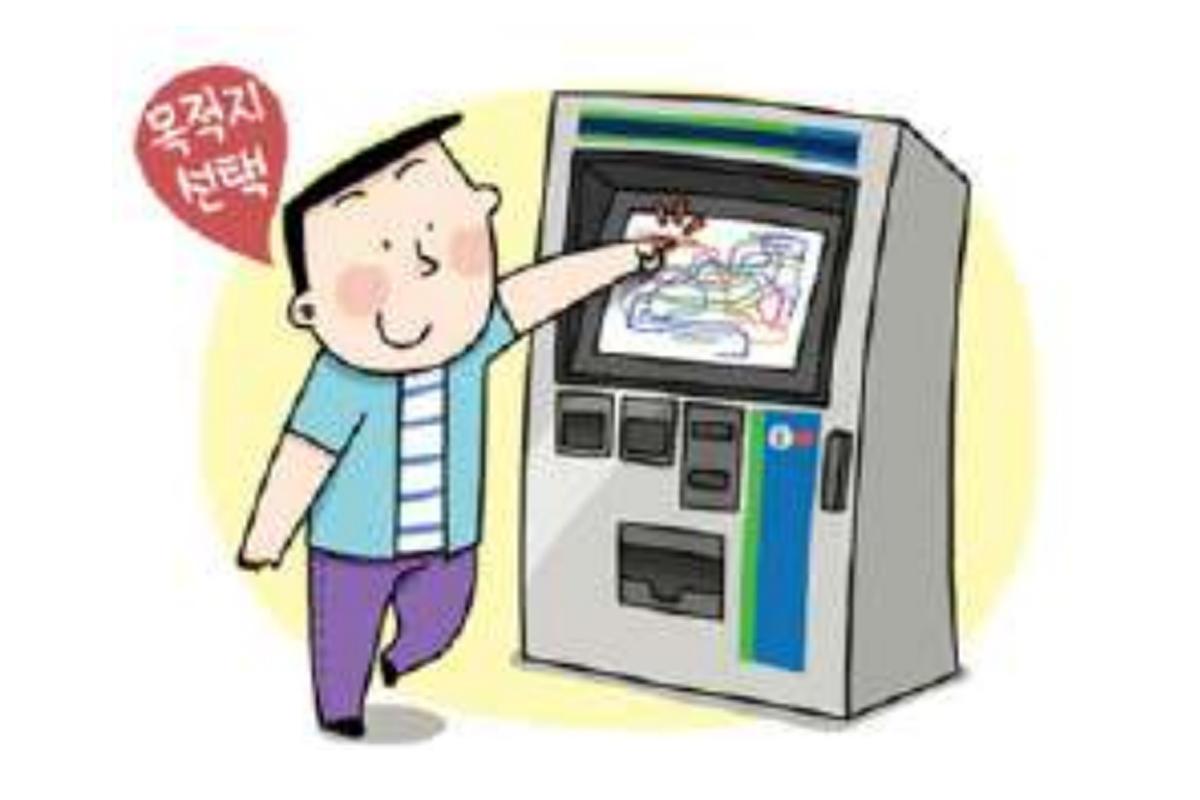 At the 'One-time Pass/Transportation Card Charging' machine, select your destination, insert the fare and a 500 won deposit, and then receive the issued card. |
| Step 2 | Example of 1-time Pass 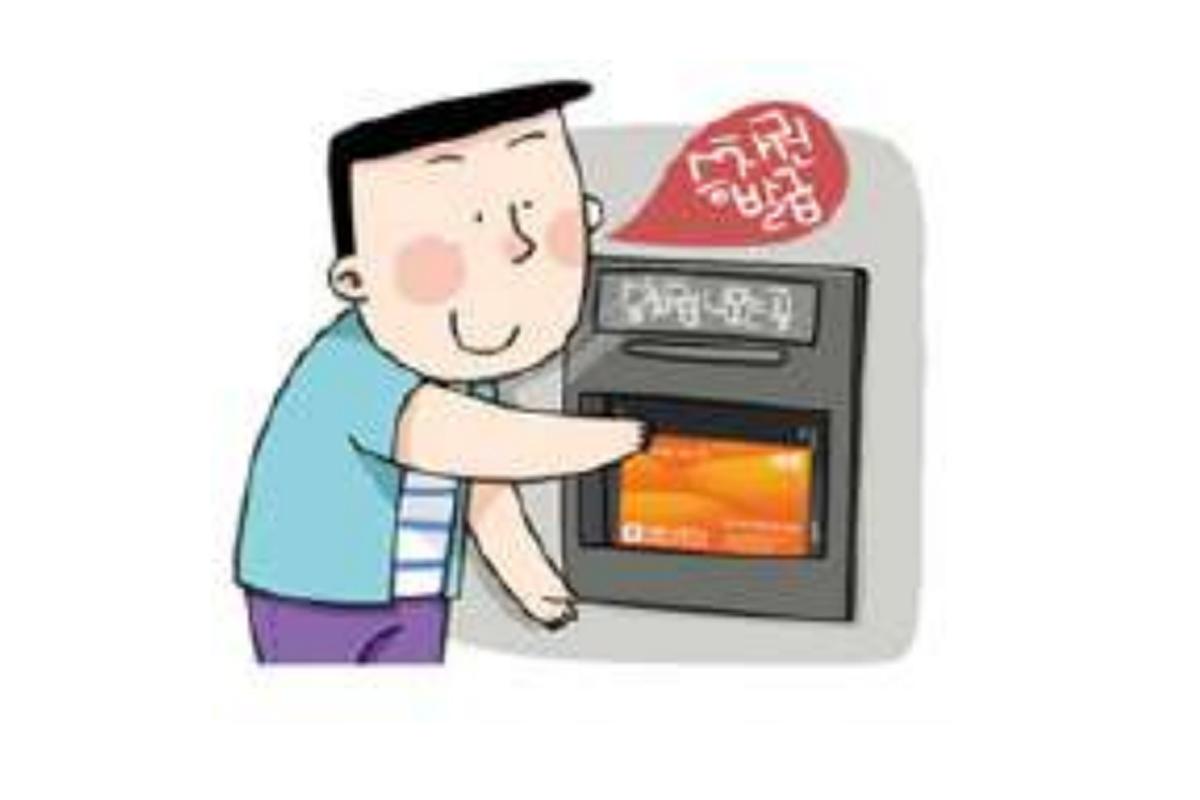 |
| Step 3 | Boarding and Unboarding  Tap the one-time pass transportation card to the terminal on the right side of the ticket gate. |
| Step 4 | Deposit Refund 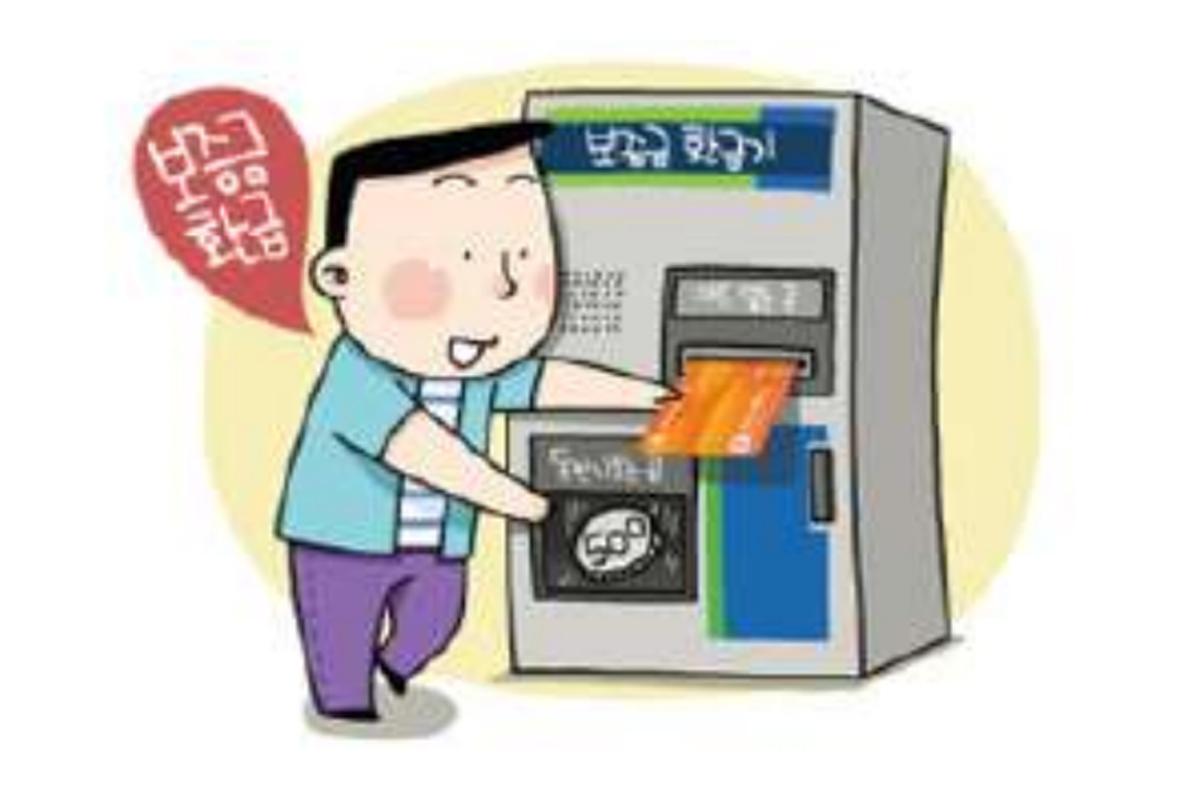 After getting off, insert the one-time pass transportation card into the 'deposit refund machine' to receive your deposit back. |
Other Cards
Other cards include all cards except for one-time-use transportation cards, such as prepaid/postpaid transportation cards, check cards and Korea Tour cards. If you have sufficient balance, you can use the ticket gate right away. Also, if your balance is insufficient due to additional charges, there are charging devices placed next to the ticket gate, so you don't have to worry.
On the Subway (while riding)
1. Announcement broadcasts
In Korean subways, background music is played only during transfer station announcements, while regular stations have just the announcement broadcasts. In addition, at popular stations for travelers such as Seoul Station, Hongdae Station, Incheon Airport Station, and Gimpo Airport Station, announcements are made in languages other than Korean, including English, Chinese, and Japanese.
2. Electronic signboards inside the subway
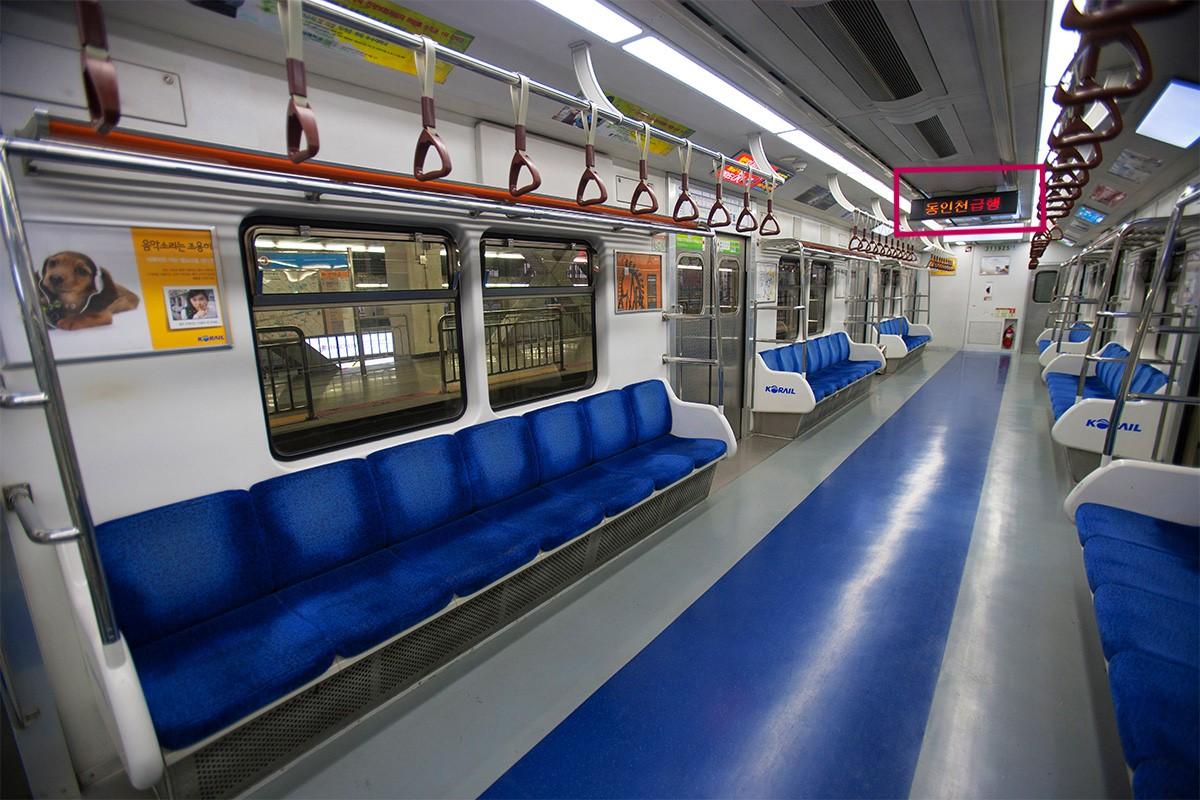
Each subway car has an electronic signboard, allowing passengers to regularly check the name of the station they are approaching and the direction of the doors.
3. Express trains
Express trains operate through selected stations with a high volume of passengers in the metropolitan area. Lines with express trains include Line 1, Line 4, Line 9, Gyeongui-Jungang Line, Suin-Bundang Line, and Gyeongchun Line. When searching for routes, express trains are also included, and if used wisely, they can save up to 30 minutes of travel time.
4. Designated seats for the elderly and disabled
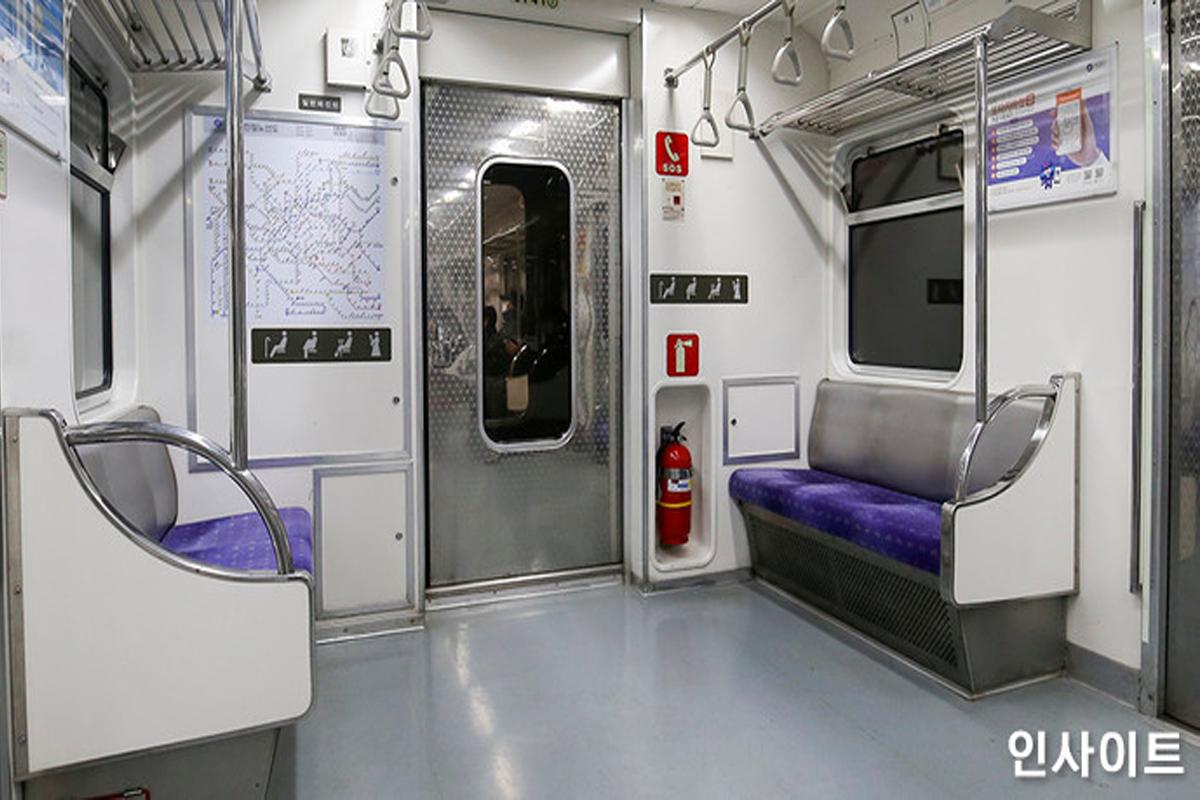
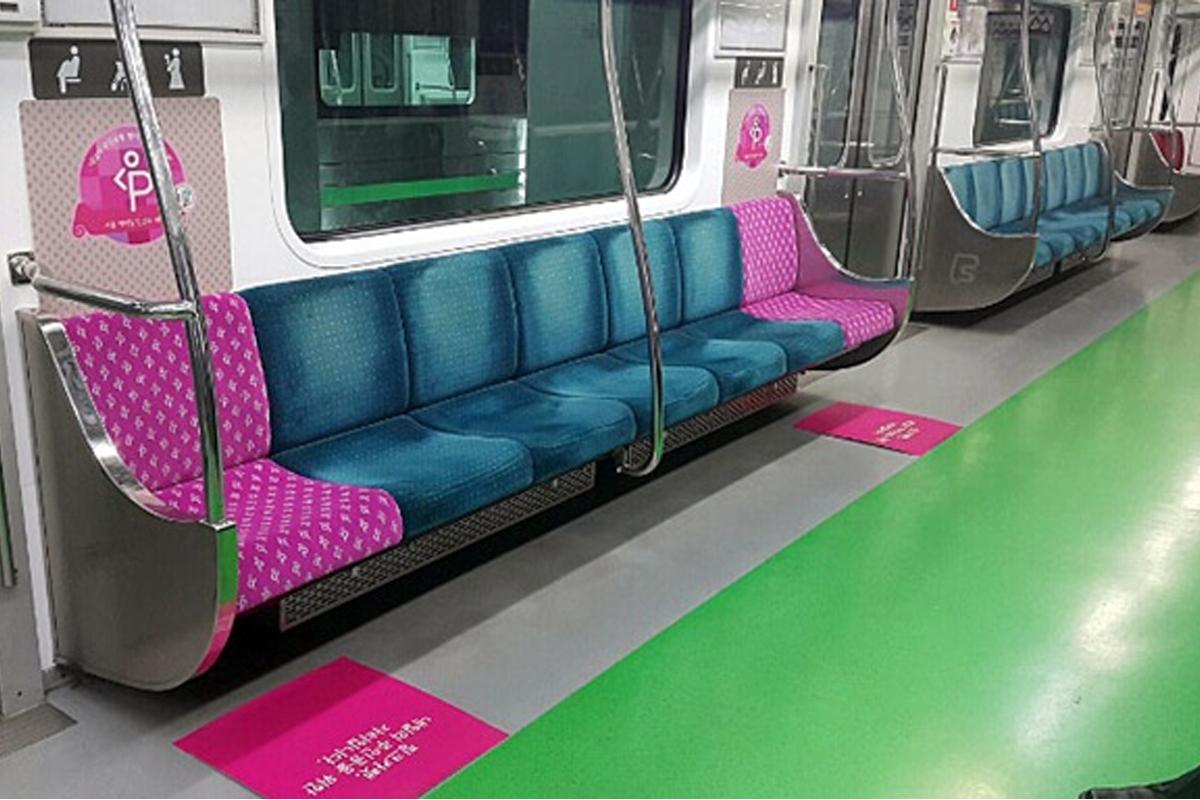
In Korean subways, 30% of seats are designated for the elderly and disabled. These seats are mostly located on both sides of the car and are a different color. There are also separate seats for pregnant women in general seating areas. These seats are pink, and in some regions, an announcement will be made when you sit down, so please be aware after boarding!
5. Basic etiquette
In fact, basic etiquette should apply when using public transportation in any country. However, there are still differences between countries, so let's see what is unique to Korea:
- Don't force your way onto the train
- Let passengers off first before boarding
- Give priority seats to those who need them
- Don't walk or run on escalators
- Set mobile devices to vibrate and speak quietly during phone calls
- Do not buy items from peddlers (In Korea, peddlers sometimes sell items on the subway)
- Do not run or make loud noises
- Do not spread legs wide after sitting down
- No food allowed
- Do not ride without a valid ticket
Additional Tips
1. Bus <-> Subway Transfers
Transferring from the subway to the bus within 30 minutes is free (from 9 PM to 7 AM, the time limit is extended to 1 hour). Transfers are only free when using a transportation card, so it's recommended to use a transportation card if you plan to use both the subway and bus! However, transferring between subway lines is not possible.
2. Transfers within the Subway
Line 9, the Airport Railroad, and the Gyeongui–Jungang Line are operated by different companies than the other lines, so you will need to tap your card again when transferring. Tapping your card will not deduct any money, so don't worry and just tap your card again at the fare gate. For example, when transferring from Line 1 to Line 2, you can transfer directly without passing through a fare gate. However, when transferring from Line 1 to Line 9, you need to transfer through a fare gate.
3. Emergency Exit Gates at Fare Gates
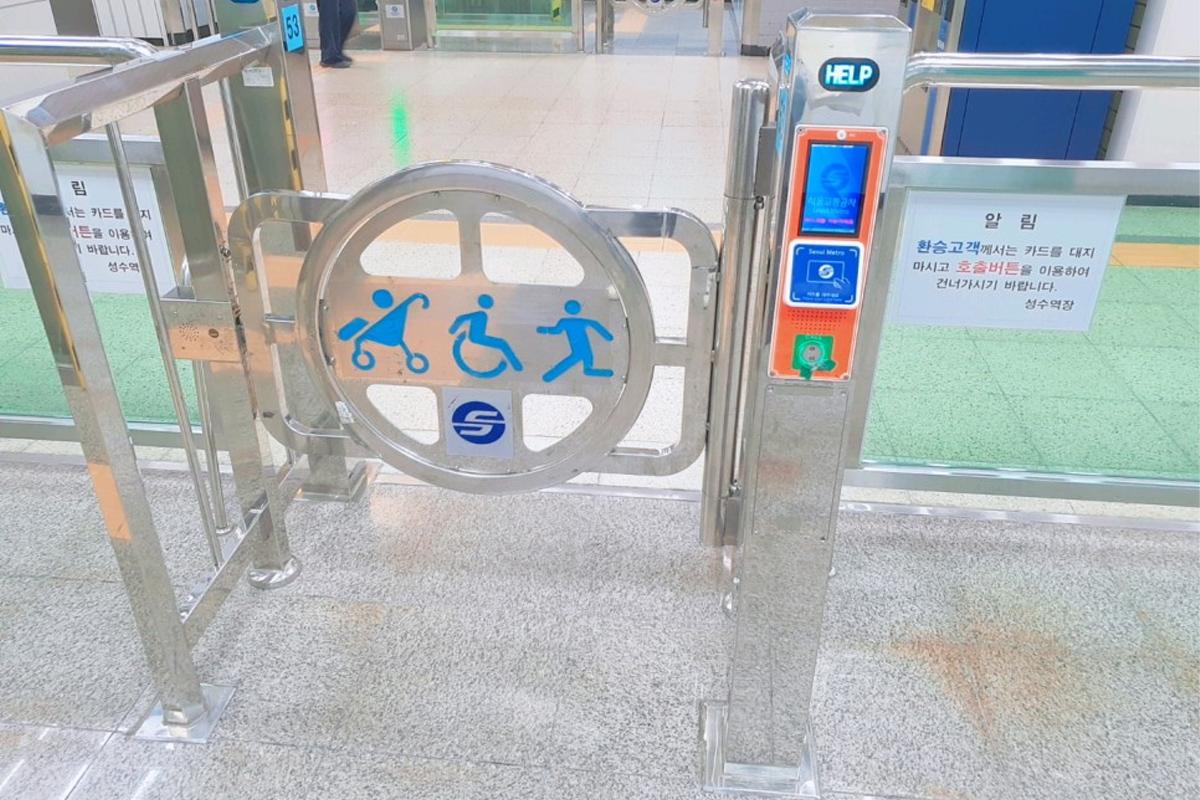
There's a door with the word 'Help' written next to every subway station's entrance gate. If you press the call button and explain your situation, the station staff will open the door for you. It's commonly used for passing through with strollers or wheelchairs, or when regular passengers accidentally enter the wrong platform and need to get to the opposite side, or when they need to use the restroom. Please use this information to your advantage :)
4. Lost and Found on the Subway
Sometimes, passengers may leave valuable items behind when dozing off or getting off the subway in a hurry. In such cases, don't panic and quickly visit the Lost and Found Center operated within the subway station. The Lost and Found Center is open from 9 am to 6 pm on weekdays, and you can visit the station office at the exit station on holidays or outside of operating hours for inquiries.
If you immediately discover your lost belongings after getting off the train, visit the station office within the subway and provide the location of the train where you left your belongings, the train number, and the subway car number. They will kindly guide you, so there's no need to worry too much!

Today, we looked at various aspects of Korean subways, including introductions to regional subways, usage procedures, and usage tips. We hope that this article will be helpful when using subways in the future!
Reference
공공데이터포털 https://www.data.go.kr/data/15013203/standard.do
레일포털 https://data.kric.go.kr/rips/
서울교통공사 사이버스테이션 https://www.seoulmetro.co.kr/kr/cyberStation.do
한국유학종합시스템 https://www.studyinkorea.go.kr/ko/jobmain.do
If you have any questions or concerns, please leave a comment below or send us an email at help@creatrip.com! You can follow us on Instagram, TikTok, Twitter, and Facebook to stay updated on all things Korea!

